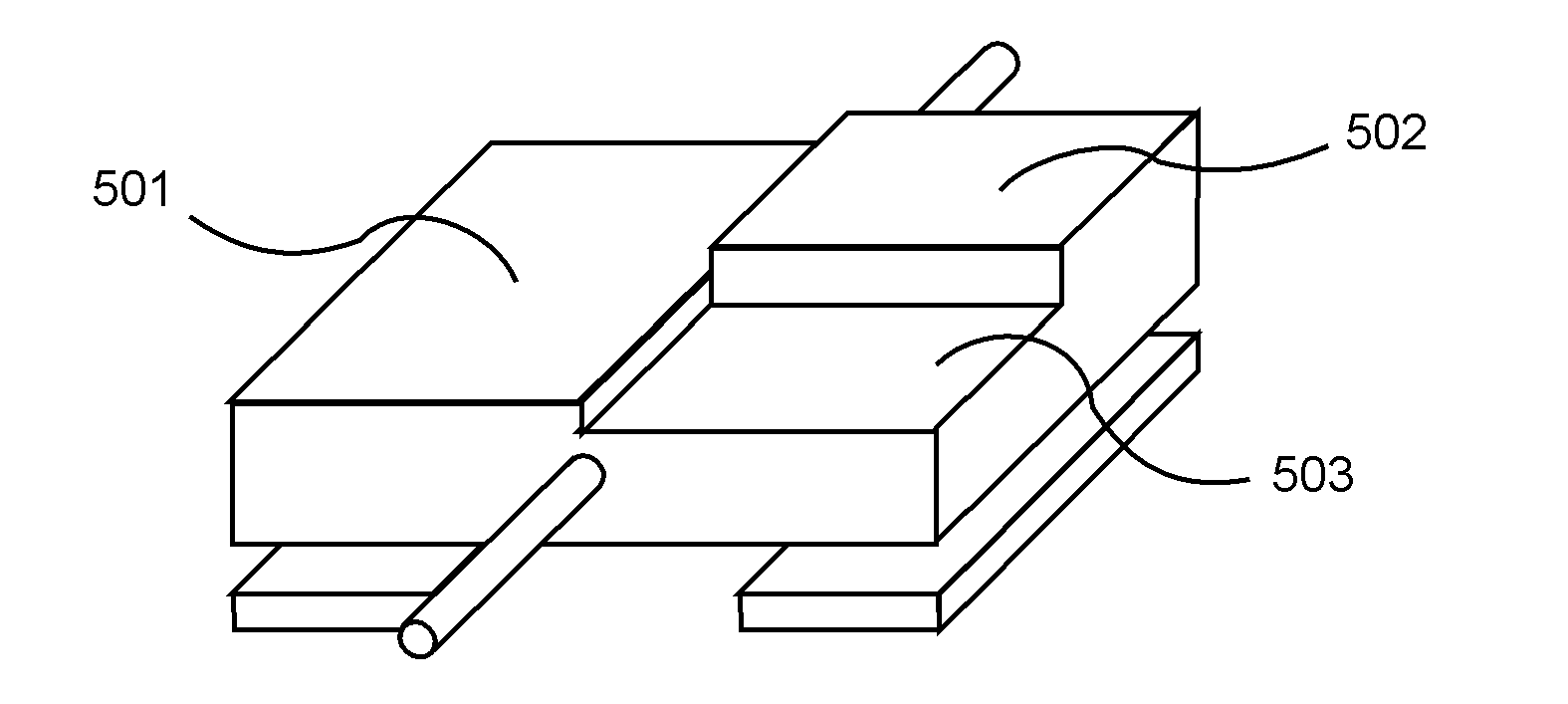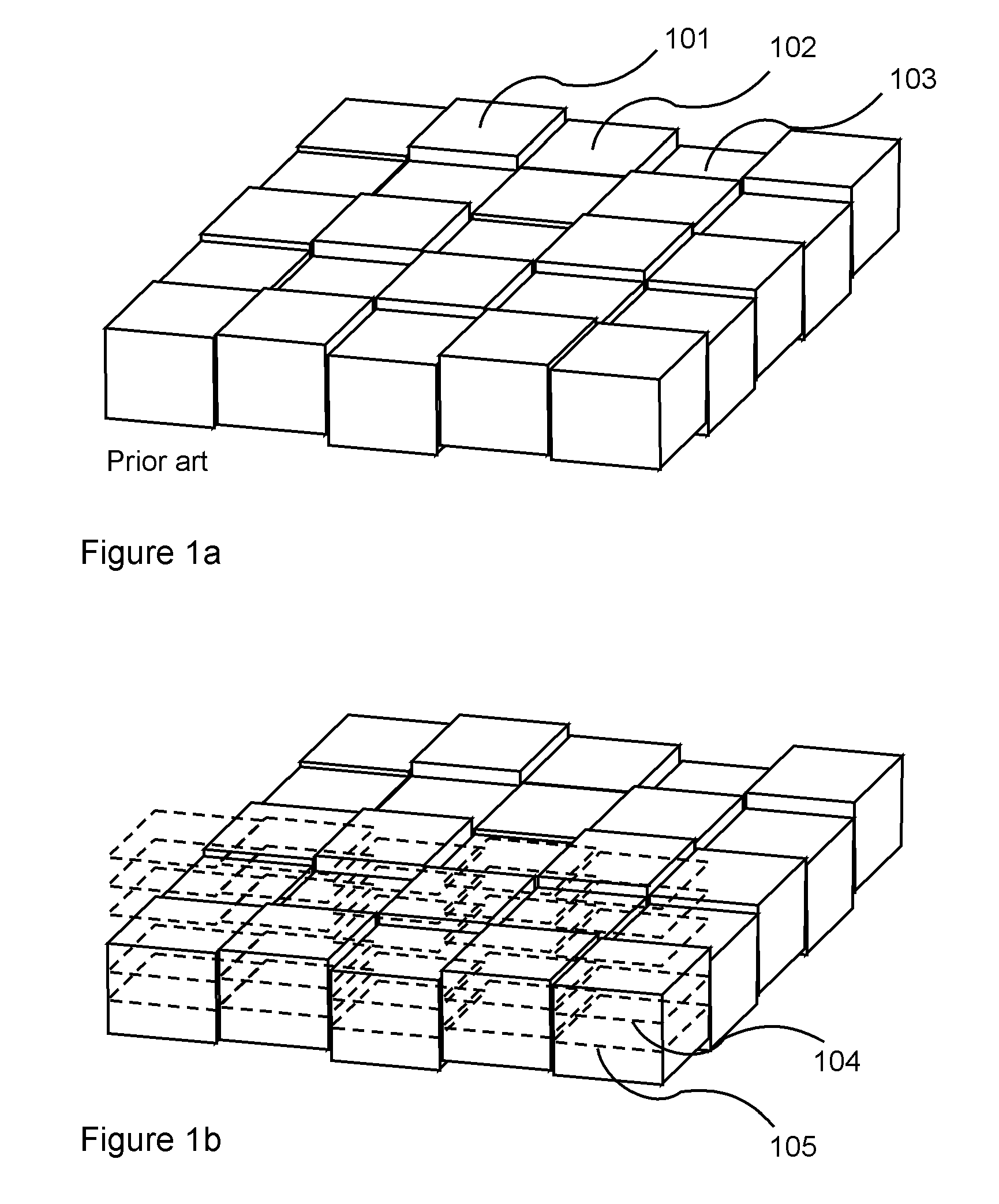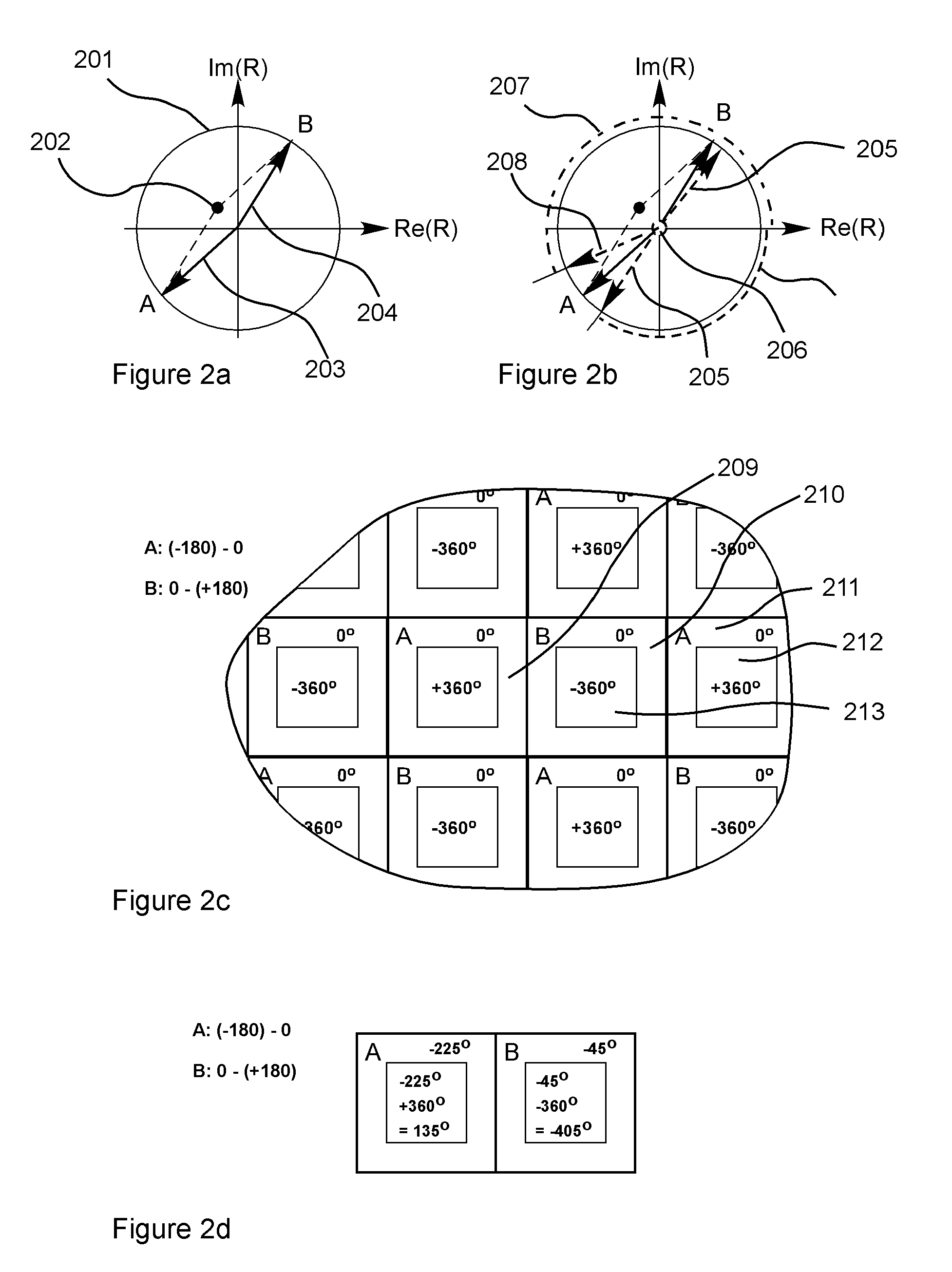Spatial light modulator with structured mirror surfaces
a mirror surface and spatial light technology, applied in the field of micromechanical reflecting slms, can solve the problems of incoherence, light is typically not coherent, and the operation speed is more limited by the data loading speed, and achieve the effects of improving slms, high precision, and simple system architectur
- Summary
- Abstract
- Description
- Claims
- Application Information
AI Technical Summary
Benefits of technology
Problems solved by technology
Method used
Image
Examples
Embodiment Construction
[0051]The following detailed description is made with reference to the figures. Preferred embodiments are described to illustrate the present invention, not to limit its scope, which is defined by the claims. Those of ordinary skill in the art will recognize a variety of equivalent variations on the description that follows.
[0052]FIG. 1 shows a spatial light modulator in prior art. It has an array of pixels, which can be one or two dimensional, dense or interspersed with passive areas. Each pixel, which may be a mirror, may move up or down so that a light field which impinges from the top, is reflected with a different phase depending on the height of the mirror or pixel. Mirror arrays as the one in FIG. 1a are used for wavefront correction, signal processing, beam steering, and for lithography as discussed above. The height of each pixel is calculated beforehand and the height information, e.g., in the form of a voltage, is fed to the actuators moving the mirrors up and down creati...
PUM
 Login to View More
Login to View More Abstract
Description
Claims
Application Information
 Login to View More
Login to View More - R&D
- Intellectual Property
- Life Sciences
- Materials
- Tech Scout
- Unparalleled Data Quality
- Higher Quality Content
- 60% Fewer Hallucinations
Browse by: Latest US Patents, China's latest patents, Technical Efficacy Thesaurus, Application Domain, Technology Topic, Popular Technical Reports.
© 2025 PatSnap. All rights reserved.Legal|Privacy policy|Modern Slavery Act Transparency Statement|Sitemap|About US| Contact US: help@patsnap.com



